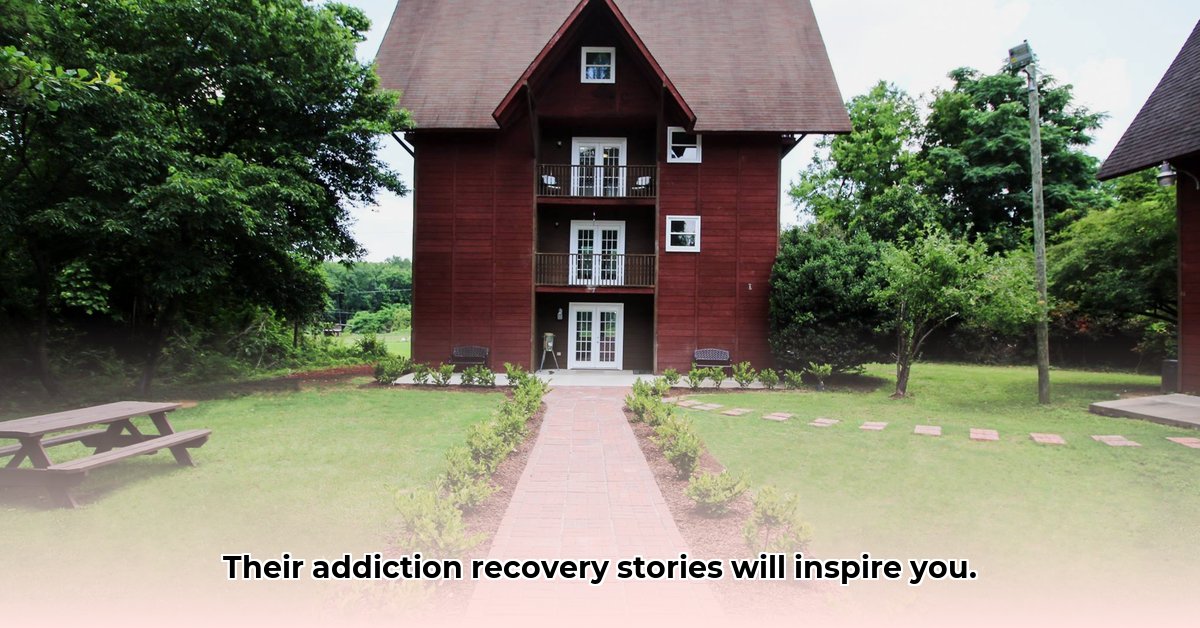
Owl's Nest Recovery (ONR) in Florence, South Carolina, offers a comprehensive addiction treatment program focusing on holistic care and personalized support. This review examines ONR's strengths and weaknesses, providing information for prospective patients, referring physicians, administrators, and investors. While ONR’s supportive environment is a significant advantage, crucial data transparency regarding treatment efficacy are needed.
A Holistic Approach with a Need for Data Transparency
ONR's approach centers on a strong sense of community and peer support. Many staff members are former patients, fostering a unique understanding and shared experience. As their website states, "[Insert quote from ONR website emphasizing community and peer support, with proper attribution]". This fosters a powerful sense of belonging, a crucial aspect of recovery. However, while a supportive community contributes significantly to a positive treatment experience, concrete evidence of long-term recovery rates is needed to fully evaluate its effectiveness. The absence of readily available data on treatment success rates and patient outcomes is a notable concern.
Addressing the Need for Improved Data and Transparency
The lack of publicly accessible data on treatment efficacy is a significant area for improvement. More comprehensive data on patient demographics (age, gender, substance type, addiction duration) would provide a clearer picture of ONR's success in treating specific populations. This enhanced transparency is vital for building trust among referring physicians and prospective patients, and is essential for objective program evaluation. Improved data collection and analysis would allow for a more thorough evaluation and continuous improvement of the program’s efficacy. Currently, assessing ONR's effectiveness is hampered by a lack of measurable outcomes.
Actionable Insights for Key Stakeholders
Improving ONR's data transparency and overall performance requires collaborative action from various groups:
For Prospective Patients:
- Thoroughly research ONR and other facilities, comparing treatment approaches and success rates.
- Directly inquire about success rates, patient testimonials (verified whenever possible), and post-treatment support.
- Understand the financial implications and available payment options.
- Assess the long-term support system and aftercare plan for sustained recovery.
For Referring Physicians:
- Request detailed treatment protocols and outcome data to inform decisions.
- Establish a collaborative relationship with ONR for ongoing communication and patient progress updates (with patient consent).
- Actively participate in evaluating aggregate data to assess the program's effectiveness across diverse patient populations.
For ONR Administration:
- Invest in a robust data collection system to meticulously track patient outcomes, encompassing both short-term and long-term metrics.
- Regularly benchmark the program’s effectiveness against similar facilities. This data-driven approach is crucial for continuous improvement.
- Explore strategic expansion while prioritizing the maintenance of high-quality care.
- Strengthen partnerships with mental health professionals to address co-occurring disorders.
For Investors and Funders:
- Conduct thorough due diligence, focusing on quantifiable outcomes and a demonstrable ROI. This requires examining the data collection methodology and data quality.
- Base long-term funding decisions on verifiable success rates and improvements in patient outcomes.
Risk Assessment Matrix
The following matrix summarizes potential risks and suggested mitigation strategies:
| Risk Factor | Likelihood | Impact | Mitigation Strategy |
|---|---|---|---|
| Lack of outcome data | High | High | Implement rigorous data collection and analysis; make data publicly accessible. |
| Reliance on a single care model | Medium | Medium | Explore and incorporate diverse treatment models; offer individualized treatment plans. |
| Staff burnout | Medium | Medium | Invest in comprehensive staff training, supervision, and wellness programs. |
| Limited geographic reach | Low | Low | Explore strategic partnerships or expansion options while maintaining quality. |
Conclusion: A Promising Program Requiring Further Development
Owl's Nest Recovery demonstrates a strong commitment to community-based care and personalized treatment. However, a critical next step is enhancing data transparency to showcase its effectiveness. While a supportive environment is crucial, concrete evidence of long-term patient success is paramount for building trust and attracting patients and investors. Increased data collection, rigorous analysis, and publicly available results will greatly strengthen ONR's position as a leading addiction treatment center. We encourage readers to conduct thorough research and directly contact ONR for further information.